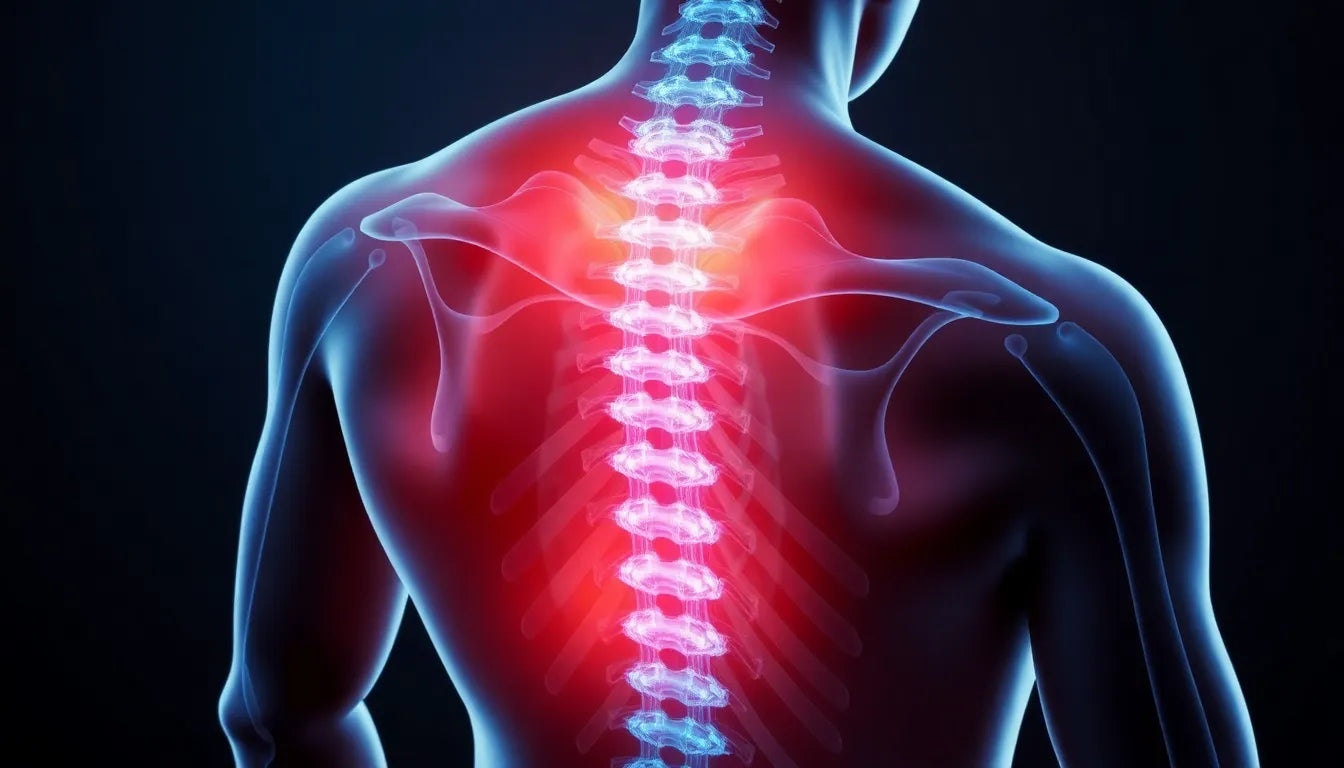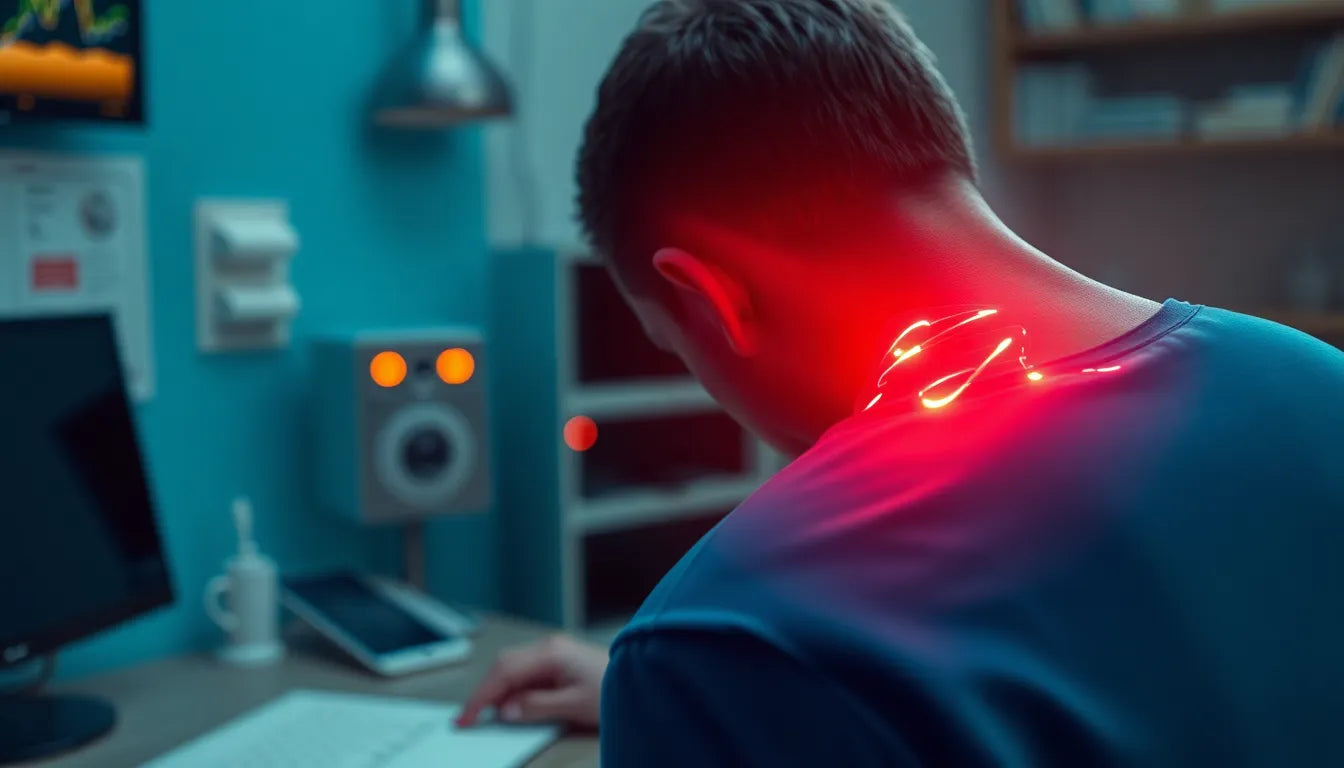Imagine waking up one morning with a slight twinge in your back, dismissing it as a minor inconvenience, only to discover later that it's a sign of something more serious. This scenario is all too common when it comes to the subtle onset of early stage herniated disc symptoms. Understanding these early signs is crucial, as they can often be overlooked, leading to more severe complications if left untreated.
Understanding herniated discs
To grasp the significance of these symptoms, it's important to first understand what a herniated disc is. Our spine is composed of a series of bones called vertebrae, cushioned by small, spongy discs that act as shock absorbers, allowing for flexibility and movement. A herniated disc occurs when the soft inner gel of the disc pushes through a tear in the tougher exterior, potentially pressing on nearby nerves. This can lead to pain, numbness, or weakness in the limbs. Early detection of a herniated disc is vital to prevent long-term damage and ensure effective treatment.
Spotting early stage symptoms
The early stage symptoms of a herniated disc can be deceptively mild, often dismissed as routine aches or stiffness. These symptoms are usually localized, meaning they occur in the specific area of the spine where the disc is affected. For instance, if the herniation is in the cervical (neck) region, you might experience discomfort that radiates to the shoulders or arms. In the lumbar (lower back) area, pain might extend to the buttocks or legs. Thoracic (mid-back) herniations, though less common, can affect the chest or abdomen.
Recognizing these early symptoms is the first step towards timely intervention. The purpose of this post is to educate readers on how to identify these signs, encouraging proactive measures that can mitigate further complications. By being aware of the subtle indicators of a herniated disc, individuals can seek appropriate medical advice and treatment, potentially avoiding more severe outcomes.
In the following sections, we will delve deeper into the stages of disc herniation, explore the various symptoms associated with each stage, and discuss the importance of early diagnosis and treatment. Stay tuned to uncover the hidden signs of early stage herniated discs and learn how to take charge of your spinal health.
Stages of disc herniation: understanding the progression
Disc herniation is a progressive condition that typically unfolds in four stages: degeneration, prolapse, extrusion, and sequestration. Each stage represents a different level of disc damage and potential for symptom severity. In the early stages, namely degeneration and prolapse, the signs can be subtle but are crucial for early detection and intervention.
During the degeneration stage, the discs in the spine begin to lose their elasticity and hydration, which can lead to minor discomfort or stiffness. This stage is often asymptomatic but can set the foundation for more noticeable issues as the condition progresses. Prolapse, or the bulging stage, is where the disc starts to protrude outward, potentially causing localized pain and nerve irritation. Recognizing the symptoms at these early stages can be key to preventing further progression.
Localized pain: a telltale early symptom
One of the earliest indicators of a herniated disc is localized pain, which can vary depending on the spine region affected. In the cervical region, pain might radiate to the shoulders and arms, often described as a dull ache or sharp discomfort. Lumbar herniations are more common, with pain extending to the buttocks or legs, sometimes accompanied by stiffness. Although less frequent, thoracic herniations can result in pain that affects the chest or abdomen.
This localized pain is often the first warning sign of disc herniation. It may initially be dismissed as a minor issue but can escalate if not addressed promptly. Understanding the specific characteristics of this pain can help individuals seek medical evaluation and avoid chronic issues.
Radiating pain and numbness: signs of nerve involvement
As the disc condition progresses, nerve compression can lead to more pronounced symptoms such as radiating pain and numbness. This is commonly known as radiculopathy, where the pain travels along the path of the affected nerve. In the cervical region, this might manifest as tingling or numbness in the arms and hands. In the lumbar area, it often presents as sciatica, characterized by pain or numbness extending down the leg or into the foot.
- Cervical: Tingling or numbness in the arms and hands.
- Lumbar: Sciatica, leg pain, or foot numbness.
These symptoms are indicative of nerve involvement and should not be ignored. They suggest that the herniated disc is pressing on nearby nerves, requiring prompt medical attention to prevent further damage.
Muscle weakness and spasms: early warning signs
Another early symptom of a herniated disc is muscle weakness and spasms. As the disc deteriorates, it can impact the surrounding muscles, leading to weakness or involuntary contractions. This can affect mobility and strength, making everyday activities more challenging.
Muscle spasms are particularly concerning as they can exacerbate pain and lead to more severe complications if left untreated. Recognizing these signs early on is essential for taking corrective measures and preventing further deterioration of spinal health.
Visualizing the stages and symptoms
To better understand the progression of herniated disc symptoms, consider utilizing visual aids such as infographics. These can effectively illustrate the stages of herniation and the associated symptoms by spine region, providing a clearer picture of what to look out for. By visualizing these stages, individuals can gain a deeper understanding of their condition and the importance of early intervention.
In conclusion, recognizing the early stage symptoms of a herniated disc is crucial for preventing long-term complications. By understanding the stages of disc herniation and the associated symptoms, individuals can take proactive steps towards seeking medical evaluation and treatment. Early detection and intervention can significantly improve outcomes and enhance quality of life.
Complications of ignoring early symptoms
Overlooking the early signs of a herniated disc can lead to significant complications that affect quality of life. Chronic pain is a common outcome, as the persistent pressure on nerves can cause ongoing discomfort and limit daily activities. Additionally, severe neurological issues may arise if the condition progresses without intervention. Conditions such as foot drop, where the ability to lift the front part of the foot is impaired, or cauda equina syndrome, a rare but serious condition that affects the bundle of nerves at the base of the spine, require immediate medical attention.
These complications highlight the importance of not dismissing early symptoms as minor annoyances. Proactive management and timely medical evaluation can prevent these severe outcomes and preserve spinal health.
Importance of early diagnosis and treatment
Seeking medical advice at the first sign of early stage herniated disc symptoms is crucial. Early diagnosis allows for a wider range of treatment options, which can include physical therapy, medications, and lifestyle adjustments that may prevent the need for more invasive procedures. Ergonomic aids, such as those offered by Anodyne, can support pain management and recovery, helping to alleviate discomfort and improve mobility.
By addressing the issue early, individuals can reduce the risk of chronic pain and long-term disability, ensuring a better quality of life and maintaining their ability to engage in daily activities.
Frequently Asked Questions
What causes a herniated disc?
A herniated disc can result from various factors, including the natural aging process, which causes discs to lose their flexibility and elasticity. Injury or trauma to the spine, as well as repetitive stress from activities like heavy lifting or twisting motions, can also lead to disc herniation.
How is a herniated disc diagnosed?
Diagnosis typically involves a physical examination to assess pain and neurological function, followed by imaging tests such as MRI or CT scans to visualize the extent of disc damage and nerve involvement.
Can early stage herniated discs heal on their own?
In some cases, early stage herniated discs can improve with rest and proper care, as the body may reabsorb the protruding material. However, medical evaluation is essential to determine the appropriate treatment plan and monitor recovery.
What lifestyle changes can help manage symptoms?
Maintaining a healthy weight, practicing good posture, and engaging in regular exercise can help manage symptoms and prevent further disc damage. Strengthening core muscles and avoiding activities that strain the back are also beneficial.
When should I see a doctor?
You should seek medical attention if symptoms persist or worsen, particularly if you experience significant pain, numbness, or neurological impairment. Early intervention can prevent complications and improve treatment outcomes.


















